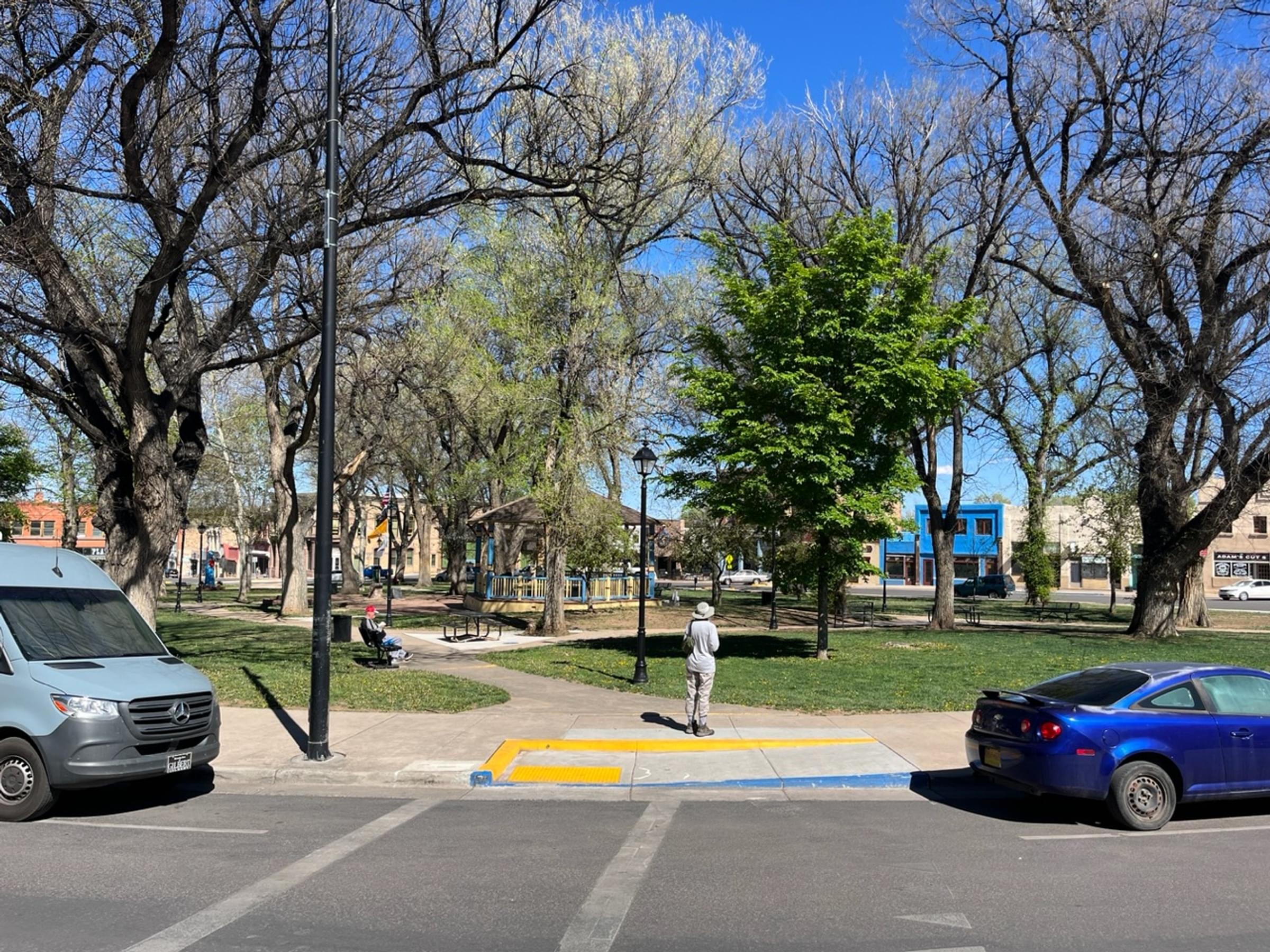Las Vegas Plaza

Tips for Birding
The Las Vegas Plaza is a popular destination, though not especially a popular birding destination. Despite the turf and many trees (mostly elm), typical urban species such as Rock Pigeons and House Sparrows are the most commonly found birds. A double-digit species list might trip the state rare bird alert. But, on a non-windy late spring to early fall afternoon, taking your binoculars out to a sidewalk table of one of the establishments surrounding the plaza, not merely the eponymous hotel, can provide entertainment with your refreshment. If the weather is less clement, get a window seat inside. Your most challenging identification will be, at dusk, telling a bat from a barn swallow, summer mid-day arguments about Cassin’s vs Western Kingbird notwithstanding.
Some of these cafes are open early morning as well, which is pleasant because there are fewer people, meaning parking is easier. This is non-trivial, given that the street around the oval plaza is one-way (counterclockwise), and while parking on the plaza side of the circumnavigating street is curbside, that opposite is diagonal back-in only. Luckily, Las Vegas is a very laid-back place, and the pace of life is such that courtesy and patience seem to be cultural. Or maybe it helps that the city police station is across from the southwest end of the plaza. If there is an event, such as gazebo bands on summer Friday nights, you will observe fewer birds, and probably have to park behind the Bridge Street shops; turn north on Valencia Street along the west side of the creek. (East of the creek, Bridge Street is known as National Avenue.)
About this Location
Las Vegas Plaza, a historic district, was established in 1835 by Mexican settlers who followed the Spanish Colonial style of architecture, with a central square surrounded by adobe buildings. The plaza was a stop on the Santa Fe Trail, a trade route that connected Missouri and New Mexico. In 1846, General Stephen W. Kearny claimed New Mexico for the United States from atop one of the buildings on the plaza. The arrival of the railroad in 1880 brought more prosperity and development to the town, and many of the old adobe structures were replaced by larger and more ornate buildings, such as the Plaza Hotel and the Ilfeld Building. The plaza was listed on the National Register of Historic Places in 1974 and is managed by the city.
Features
Wheelchair accessible trail
Restrooms on site
Entrance fee
Content from John Montgomery
Last updated July 27, 2023